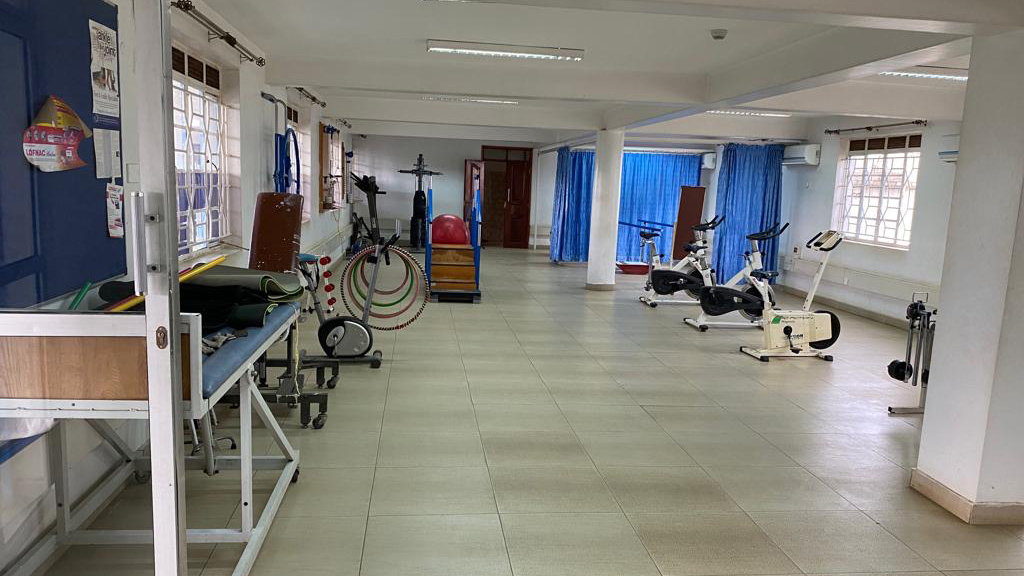Despite the high demand, the unavailability of services was noted by most rehabilitation professionals. Both professionals and end users showed enthusiasm for integrating digital services to enhance rehabilitation access. We interviewed professionals and end users in Kenya to understand the availability of rehabilitation services and how accessible the services are. We examined professionals’ technology proficiency, opinions on digital rehabilitation, and end users’ rehabilitation needs. The interviews were the first phase of research activities in Kenya for the DIRECT project.

Initial insights from the interviews
Common reasons for seeking rehabilitation included trauma, musculoskeletal disorders, motor or neurological disabilities related to childbirth, reproductive health, and gender-based violence. Service users shared their stories about seeking rehabilitation, caring for someone with disabilities, and how it sometimes required them to confront their misconceptions about persons with disabilities. For example, one respondent described how her lack of knowledge, people’s negative comments and the stigmatization associated with disability affected her. She had to go through a learning process because of her child’s condition. Seeking advice from various sources helped her learn more about the condition and to find the best care for her child, which she did at the County hospital. This was surprising, as she had a negative perception of public health institutions.
Professionals identified the barriers to accessing rehab services, discussed their work challenges, and shared positive views on using technology. For example, how digitalisation can enhance productivity, efficiency, and engagement with service users. However, some had reservations about the effectiveness of technology and what it means for their careers and/or roles as rehabilitation professionals. Similarly to Rwanda, the interviews revealed that healthcare and rehab facilities were understaffed, lacked resources such as assistive devices, and the need for additional training and support for staff. Professionals also mentioned the importance of community-based health care.

Community health workers
Our interest was also in understanding the role of community health workers (CHWs) in offering health care and rehabilitation services and documenting the health needs of the community. These health workers can play a significant role in enhancing access to rehabilitation services, according to some rehab professionals. Especially in a vast, mostly rural county with insecurity issues and poor road networks like Isiolo. CHWs are non-medical personnel who live in and work in the same communities as their clients, and have similar backgrounds and experiences. They promote health and improve health outcomes through social support (Katigbak et al., 2015) and are seen as solution to addressing the shortage of health workers in low- and middle-income countries (World Health Organization, 2018).
We interviewed CHWs in Nairobi. They had different backgrounds, but most had studied at least up to high school. All volunteers get basic training to perform their roles when they start. They receive additional training during health campaigns by the government or non-governmental organisations (NGOs), for example. Some of this training covers topics such as home-based care, COVID, family planning, and rehabilitation. The CHWs preferred working with NGOs because they provide better training and pay than public institutions. NGOs also provide devices needed for their work. Some had basic information technology training, but most of the training related to their role involved data entry. They showed enthusiasm towards using technology for health care and rehabilitation and wanted to receive additional training on digital services for their work.
The CHWs we interviewed came from the same region within Nairobi and each one handled 100 households. Every month, they are required to report or check up on at least 30. In three months, they are expected to visit most, if not all, of the households they handle. Some clients and their families need rehabilitation services, even though not all volunteers are trained in it. Those trained, have received only basic training. Often, the most they can do is to get a referral for the clients or advise them where to go.
As many of their clients have financial challenges, seeking rehabilitation is often not a priority. There is also a stigma associated with being disabled. Many people lack education and do not know that they can seek help when they have a dependent with a disability or they themselves have a disability. In communities where CHWs serve, clients with disabilities often have to make a tough decision between earning a living and taking care of themselves or their dependents. The former comes first most times, unfortunately! Some clients can be uncooperative because they think the volunteers profit from their misfortune. One role of CHWs is to collect data about the client’s health and living conditions, and report to the relevant authorities. CHWs may face doubt from clients about their work or sincerity if the clients do not receive compensation during repeated data collection.

A step towards integrating digital rehabilitation into primary care
After the interviews, approximately 40 rehabilitation professionals signed up for the Physitrack pilot program. Before starting Phase 2 of data collection in Kenya, we will recruit CHWs and train them to use a digital rehabilitation application with pre-filled exercise programs for the most common rehab cases. Given the important role of CHWs in the public health workforce (World Health Organization, 2018), training them to use digital rehabilitation services will be integral to digitalizing community-based rehabilitation and integrating rehabilitation into primary care. This addresses one of the key aims of the DIRECT project. The next step is to examine the experiences of service users, CHWs, and rehab professionals.
The project was well-received by rehabilitation professionals, CHWs, and service users. Professionals and CHWs looked forward to the possibility of using digital services more in their work. For example, in Isiolo County, one of the interview locations, there is a Telemedicine Centre that is open to incorporating digital rehabilitation services.
The interviews and overall discussions in Kenya revealed a dedicated and diligent rehabilitation and community-based health workforce passionate about their work, will go the extra mile when needed and want the best for their clients and service users. However, there is only so much they can do when they lack adequate resources and/or training to perform their tasks well.
Read more
- Information about the DIRECT project aims:
https://www.jamk.fi/en/project/direct/direct-info - Initial research insights from Kenya:
https://www.jamk.fi/en/article/initial-insights-from-the-research-in-kenya - Start of research activities in Rwanda and preliminary discussions about research collaboration in Kenya:
https://www.jamk.fi/en/article/research-activities-in-rwanda-and-kenya-have-started - An overview of the first year’s activities and future plans in the DIRECT project:
https://www.jamk.fi/en/article/combining-research-and-practice-towards-a-digital-first-model-for-rehabilitation-a-year-in-direct
DIRECT-project
Co-innovation of digital rehabilitation in the global marketplace. The overall aim of the project is to create new business opportunities globally through evidence-based practice in use of digital-first rehabilitation in different service and cultural contexts.



